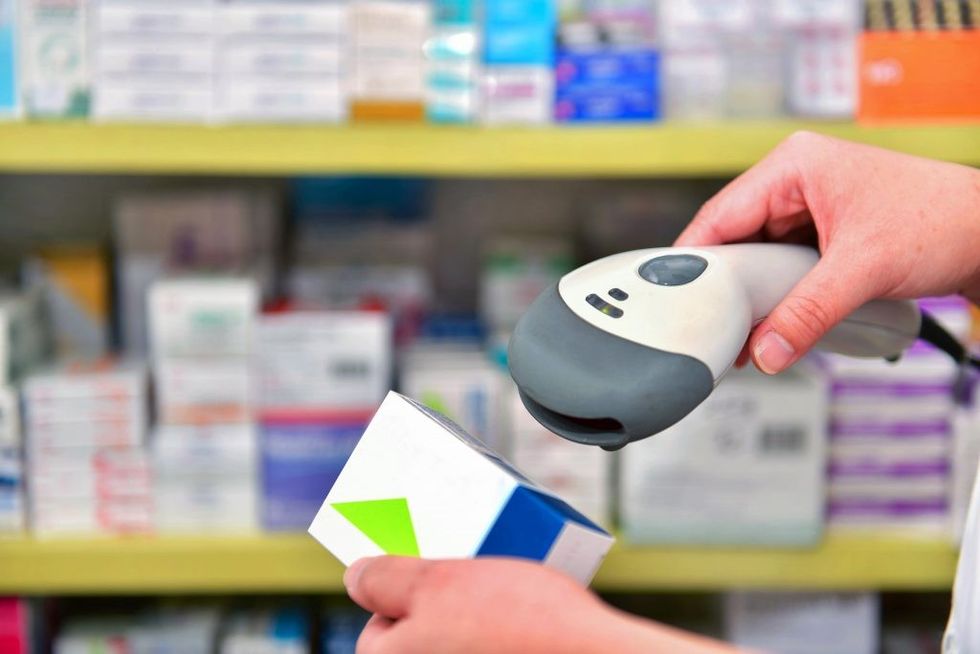Tariq Muhammad explains how the 2D barcodes as a legacy of the Falsified Medicines Directive can help drive improvements in the dispensing process…
I t doesn’t seem that long ago every pharmacy up and down the land was rushing around buying 2D barcode scanners and installing new software to avoid falling foul of the Falsified Medicines Directive (FMD).
In the time preceding Feb 9, 2019, when the system went live, you may remember the furore about the point of implementing a concept which is likely to be canned after Brexit.
Not only did businesses have to buy the necessary equipment, pharmacies were understandably annoyed at the thought of having to adapt their processes to accommodate the new requirements.
Less than 2 years later, just as the UK said goodbye to the EU, pharmacies in Great Britain (NI is still connected) were switched off from the UK National Medicines Verification System on January 1, 2021.
Somehow, I doubt if many pharmacists will mourn the loss of FMD and some may even be slightly relieved. The need to scan drugs at the point of dispensing and then decommission later was a pain for many busy sites. But before we jump in joy at not having to scan medicines anymore, let us consider what FMD brought to the table.
I must confess, I was actually pleased when FMD arrived and disappointed at its loss. Not because I particularly think that falsified drugs are the biggest issue that we face in pharmacy today, but rather because it drew attention to the wholly inadequate traditional dispensing process and it gave us an opportunity to look at new ways of doing things.
The root cause of FMD’s frustration essentially boiled down to the traditional PMR dispensing process not being fit for purpose. Pharmacies print all the labels on arrival of the prescription, pick the stock into baskets and perform a final check at the end of dispensing.
Bagged medicines are then handed out or put on the shelf ready for collection. There is no barcoding to be seen anywhere and the thought of adding in an extra step for FMD validation and decommissioning was time consuming.
It’s not just FMD. The lack of modernisation of pharmacy dispensing has limited the profession’s ability to ‘plug in’ such new requirements when they arise. The absence of technology beyond the point of labelling has forced pharmacies to rely on manual methods to ensure safety and accuracy.
For example, the reason we still do final checks is because it’s the only way we can make sure our staff put the right label on the right drug. The reason we ask manufacturers to differentiate their packaging is because it gives us that visual prompt so we can avoid Look-Alike Sound Alike errors.
Although FMD regulations have gone (for now), pharmacy needs to continue to optimise its use of barcode technology in the dispensary. The 2D barcode, which will still be printed on every drug, can yield huge benefits in our day-to-day operations when this is integrated within the PMR workflow.
Optimised workflow
In Titan PMR we introduced a workflow made up of 5 distinct steps taking the prescriptions through a digital journey - Clinical Check, Picking, Labelling, Packaging and Handout. The pharmacist only needs to be involved at the clinical check stage. Thereafter, the remaining 4 steps can be carried out by other staff and entirely managed using barcode technology.
Having logical and digital workflow gives pharmacies a platform to deliver any new requirements the world throws at us. In this example, FMD was very easy to plug in because the digital steps already existed. Validation happened at labelling and decommissioning happened at handout. Where the drugs have been validated through barcoding, we have the potential to remove the need for a pharmacist’s final check.
Dispensing safety
The above workflow requires the manufacturers barcode to be scanned, on the prescription screen for a given patient. The dispensing label is only produced if the product being scanned matches what the prescription says.
If the incorrect drug is picked and scanned, no label is produced but a near miss is recorded. The 2D barcode, which contains the expiry date of the drug, can be used at this point to prevent out of date medicines being dispensed and barcode scanning can help make Look-Alike Sound-Alike errors a thing of the past.
Batch numbers
The 2D barcode stamped onto every manufacturer’s box contains the batch number and expiry date and a number which is unique to that packet. At the point of labelling, the barcode scan extracts this data and saves it in the patient’s record against this transaction.
In the event that we have to make a drug recall, we can go to the exact patient who had the supply. We can eradicate the ancient tradition of sending mass communication out to pharmacies and patients when drugs need to be recalled.
Expiry date checking
2D barcodes can be used at the point of booking in stock and the PMR can record the batch number and expiry dates. In the event that you need to check the dates of all your stock, or carry out a drug recall, you can do this at the press of a button rather than having to check each shelf.
The end of FMD means that we no longer need to validate our dispensing against fake medicines. However, we should seriously consider the need to validate every supply to improve pharmacy services and reduce errors.
The 2D barcodes, a legacy of the FMD project, give us the potential to greatly improve patient safety, stock management and accountability. The benefits are so obvious that barcode scanning could become mandatory once again in the future. So as we bid farewell to FMD, you may want to hold onto those barcode scanners. There is a chance you may be seeing them again soon.
Pharmacist Tariq Muhammad is CEO of Invatech Health.












